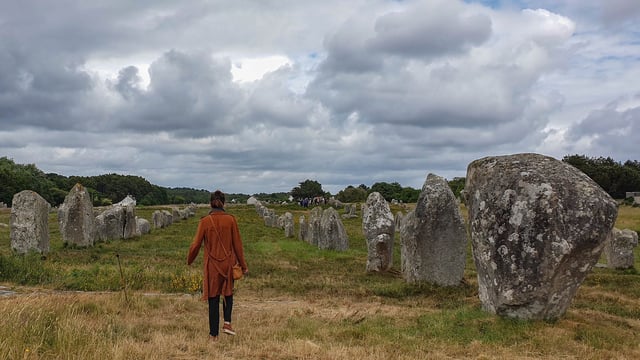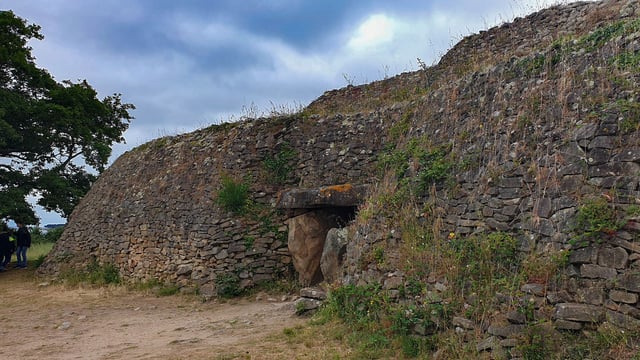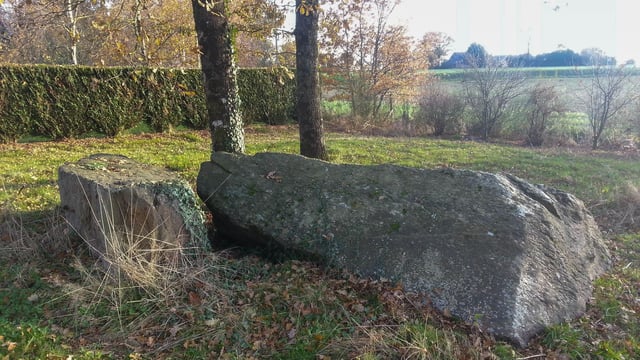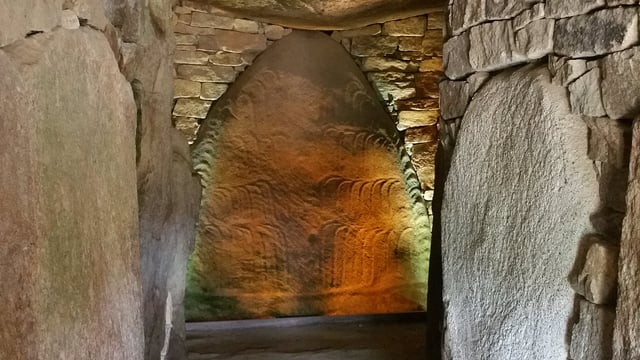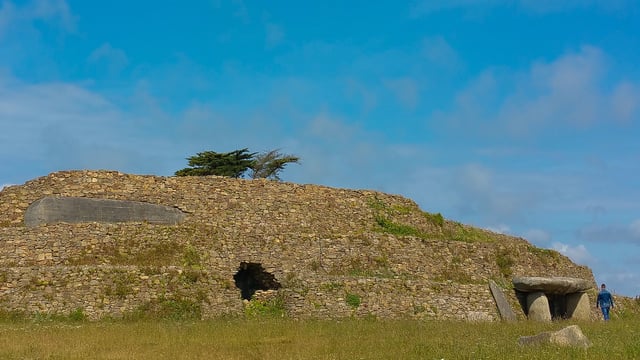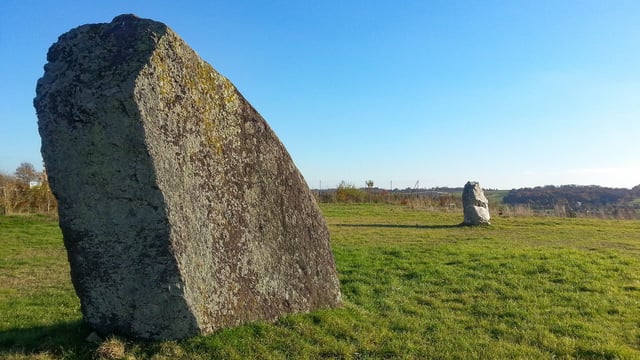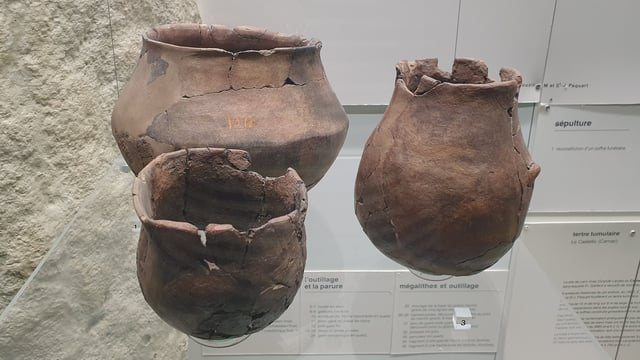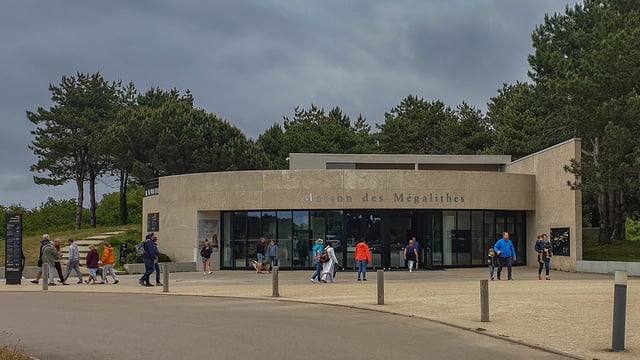Brittany
Art, History & Archaeology Sites & Museums
Brittany is the westernmost region of France, it is that large peninsula extending out into the Atlantic Ocean. The region has the greatest concentration of megalithic sites than anywhere else in the world. Rennes has been an important city since Roman times, and while many know of the strikingly walled city of Saint-Malo as a ferry port, some may be surprised to know it boasts the highest concentration of seafood restaurants in Europe. Besides offering up fruits de mer, the ocean has created a very dramatic and scenic coastline. There are four administrative departments in Brittany, they are: Côte-d’Amour, Finistère, Ille-et-Vilaine and Morbihan.
Travel Ideas
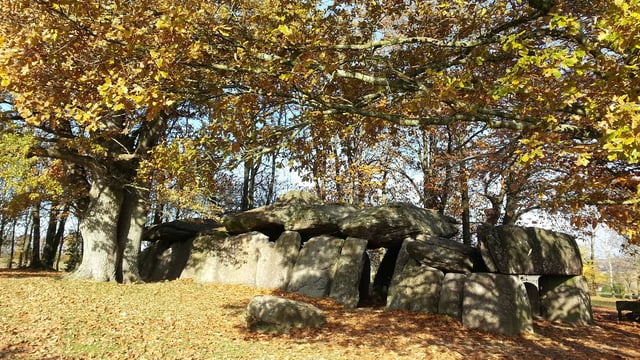
Menhirs, Megaliths and Fairies in North Eastern Brittany
Historic Towns in Brittany
Fougères
Once an important centre for the shoemaking industry, but also well known for its glass-making, the Breton town of Fougères has a number of surviving medieval features that will certainly interest anyone fascinated in this period of France’s past. The imposing, well-preserved castle-fort is said to be the largest of its kind in Europe, while the nearby belfry is the oldest of the remaining three medieval belfries in Brittany.

Vitre
Vitre is one of a handful of French towns that have best retained a Medieval appearance and charm. Given the well preserved castle-fort, substantial ramparts that surround the old town, and then many characterful medieval streets within the confines of these ramparts, it is easy to see why this is the case. Obviously in a strategic location, the fortified castle and town were part of les Marches de Bretagne – a line of castles that stretched from Mont-Saint-Michel in north to Nantes in the south.

Archaeology & History Sites in Brittany
Carnac Stone Alignments
The different series of stone alignments to the north of Carnac are made up of over 3,000 individual standing stones – they are the largest concentration of megaliths in the World. Thought to have been erected between 7,000 and 4,000 years ago, the lines of standing stones cover a distance of about four kilometres in total. Although now fenced off, guided tours of certain sections of the stones are available that enable visitors to walk among the stones. These guided tours are highly recommended.

Château de Vitré
Located on the Breton border, the castle has long been an important defensive point along the Marches of Brittany. The stone castle in its triangular shape was built in the early part of the 13th century, replacing an earlier Romanesque style fortification – of which only a doorway survives. Today the castle houses the town hall as well as a museum. Visitors are able to explore various parts of the castle, including the towers and the ramparts, from which there are spectacular views. Permanent exhibits in the museum tell the history of the castle and the town.

Gavrinis Passage Tomb
The stone cairn with its decorated passage tomb is not only one of the more spectacular Neolithic sites in the Morbihan area, it is also a great day out for the whole family. Today, because of the rise of sea levels since it was built, the cairn is now on a small island, and the only means of getting there is a short ferry ride from the nearby coastal fishing village of Lamor-Baden. Once on the privately owned island a guided tour enables access to the decorated passage tomb.

La Roche-aux-Fées
Forty-one enormous stones make up a passage, or covered alley, that is 20 metres in length, four times as long as it is wide. Most archaeologists ad enthusiasts alike accept that this is the largest such megalithic in the World. The dolmen is aligned inn such a way that it catches the rising sun at the winter solstice. The land around it is now a well kept parkland that has a Visitors Centre, which is only open during the summer months

La Table-aux-Fées de Saulnières
This dolmen is on gated and locked private property, and so it is inaccessible to the public. There is nothing much to see anyway, other than two very large stones, one of which is over two metres in length. As with all the other megaliths in the area, these two seemingly abandoned stones feature in local folklore and are thought to have been left by the fairies (fées) when they were taking stones from Saulnières to la Roche-aux-Fées.


Mané-Vechen Gallo-Roman Villa
Although first noted in 1929, the site was not excavated until 2000. This Severan villa maritima has three wings that surround a courtyard. The villa would have had magnificent panoramic views of the estuary, but well protected from the ocean. Built in the 2nd century AD, the exceptional quality of the wall decoration, the statuary and the interior gardens indicate this was clearly the residence of a wealthy local aristocrat. It was largely destroyed by fire in the 280s, and thereafter only used by squatters.

Megalithic Sites of Locmariaquer
There are a number of megalithic sites in the seaside town of Locmariaquer. The main site open to the public is an intriguing cluster of different megalithic structures. This includes the tumulus of Er-Grah, the Tables des Marchands Cairn, and a enormous broken menhir – which is thought to be the biggest prehistoric stone stele in Europe. Not to be missed is the large, decorated megalith inside the cairn, which is open to the public. The Visitor Center has a very informative short documentary about the megalithic tradition in the area.

Parlement de Bretagne
Opened on 16 January in 1655, this is one of the parlements of the Ancien Régime. The main responsibilities of the Parlement was the processing of appeals against judgements in civil, not criminal cases. In essence, it served to defend the rights of the province, the so-called ‘Breton liberties’. All such parlements in the Kingdom of France were abolished in 1789. The building now houses the Rennes Court of Appeal, Brittany’s judicial successor of the Parlement.

Petit Mont Chambered Tomb & WWII Bunker
The cairn of Petit Mont is thought to be one of the most significant chambered tombs in Brittany. Although this is for all intents and purposes a ‘Neolithic site’, from about 6,600 years ago, it is an excellent example of how monuments constructed in one period are re-used in subsequent periods. Artefacts recovered during excavations show that this site was also in use during the Bronze Age and the Gallo-Roman period. But the most obvious evidence of re-use is the typical German bunker built into the cairn in 1943.

Porte Mordelaise, Rennes
The Porte Mordelaise is one of the few surviving features of the 15th century ramparts that surrounded the city. It was also know as the ‘porte royale’ or ‘porte ducale’ because future Dukes had to swear their oath in front of the gate. With its two stone towers, carriage gate and drawbridge, this was the main entrance to the medieval city of Rennes. The towers are crowned with machiolations. To the left of the gate are further remnants of the wall.

Saint George Palace
One of the many striking and interesting historic buildings in the city of Rennes. Constructed in 1670, a clue to its origins can be seen in the letters above the arches: Magdelaine de la Fayette. She was the 38th abbess of the Benedictine Abbey of Saint George when this building replaced the older abbey. The abbey was founded in 1032 by Duke Alain III of Brittany. After the French Revolution the abbey was seized by the government. It now owned by the city, and is used as offices for social services.

Saint-Michel Tumulus
This spectacular tumulus, measuring 125 metres long, 60 metres wide and 10 meters high, and typical for the Carnac area, was constructed during the Neolithic period on what was already a naturally high point on the landscape. From the top of the tumulus there is an expansive view of the surrounding area. This position is clearly something the local community took advantage of in the later medieval period, when a church was constructed above the tumulus.

Sel-de-Bretagne Menhirs
Two standing stones can be visited on the outskirts of the town of Sel-du-Bretagne, and are in a small field that has been fenced off that can be accessed via a footpath from the town square in the village. These two stones are known locally as les menhirs du Champ de la Pierre et du Champ Horel. According to local folklore these two striking stones were abandoned here by the fairies while they were making the nearby Roche-aux-Fées passage tomb.


Temple of Mars, Corseul
The most striking feature of the sanctuary complex on the edge of Corseul are the surviving walls of an octagonal cella. Today they are just over 10 m high, but it is thought that they rose to a height of 22 m. Although no inscriptions or statues provide the name of the deity worshipped here, clues suggest it was Mars. Besides the cella, the foundations of other parts of the sanctuary, including side porticos and vestibules, are visible. Visually, this is one of the most impressive Roman monuments in Brittany.

Museums & Art Galleries in Brittany
Carnac Prehistory Museum
The Musée de Préhistoire de Carnac is housed in an old rectory with a collection of over 7,000 artefacts from many of the megalithic sites in the area – one of the richest museums for megalithic culture. A handful of display that deal with the various aspects of everyday life, but the museum has a greater focus on the development and significance of funerary architecture, from the early dolmens to the later, more complex passage tombs. A few galleries explore the Iron Age and Roman periods.

Maison des Mégaliths, Carnac
Besides serving as an information point and a ticket office for guided tours of the Carnac stone alignments, the Maison des Mégalithes also has a series of exhibitions outlining the history and understanding of the megalithic tradition in southern Brittany. The viewing platform on top of the building is a viewing platform that gives a better view of the alignments than you will get at the fence.






